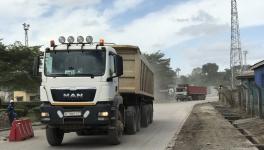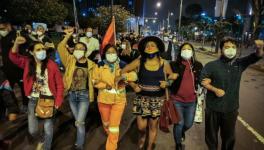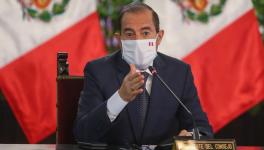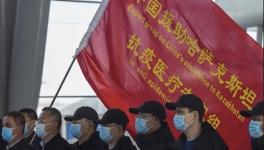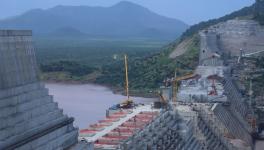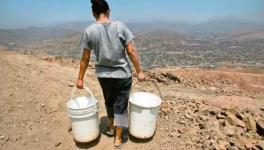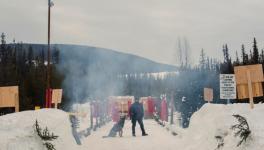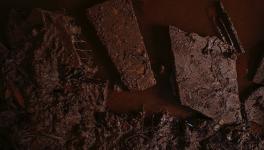Protests in Peru Against Tía María Mining Project Enters Second Week
Protests begin against Tía María mining project. Photo: Diario Correo
Since July 15, thousands of farmers and inhabitants of the Tambo Valley, in the Cocachacra municipality, Islay province, Arequipa region, Peru, have been mobilizing in rejection of the right-wing government of President Martín Vizcarra’s decision to authorize the Mexican mining company, Southern Copper Corporation (SCC), to begin the construction of the long-resisted Tía María mining project.
On July 8, the Ministry of Energy and Mines granted construction license to the SCC despite strong resistance by environmentalists and inhabitants. The protesters are demanding that the government revoke the granted license, considering the negative consequences that mining activities will have on the environment and agriculture.
The governor of Arequipa, Elmer Cáceres demanded on July 16, that the president withdraw the permit given to the SCC within 72-hours, or else there would be no dialogue to obtain the social license that the company requires to execute the project. Cáceres argued that the government granted the permit in haste without taking into account the community’s concerns. That same day, president Vizcarra refused to revoke the license.
After speaking to Vizcarra Elmer Cáceres told a Peruvian news outlet, “I told him [Vizcarra] and I will repeat it: Mr. President more important than any mine is the life of a Peruvian. The life of a Peruvian is worth more than all the gold in the world. ”
On July 18, in an attempt to settle the controversy and indignation generated by his administration’s decision, Vizcarra assured that the project would not proceed until the company sits down with the citizens and clarifies their concerns.
The community began a strike on July 15 in the municipality of Cocachacra with an impressive mobilisation. Hundreds of farmers took to the streets and demonstrated in the Plaza San Francisco, located in the center of the municipality. They also blocked the Pan-American Highway and marched along the road with green flags that say “Agro yes, mining no”. The mobilisation received the support of several social organisations as well as political leaders of the Frente Amplio, a political coalition of left-wing parties and movements in Peru.
Protests begin against TÃa MarÃa mining project. Photo: Diario Correo
Due to the strike, throughout the week, schools, markets and small-businesses in Cocachacra have remained closed while the transportation services almost paralyzed.
The strike is growing. The trade union of education workers of Arequipa region has expressed its solidarity and suspended all kinds of educational activities across the region. The civil workers trade union, the General Confederation of Peruvian Workers (CGTP), has also called on its 40 associated construction and civil workers unions to halt their activities and support the peasants.
What is the Tía María mining project?
Tía María is a large open-pit copper mine located in the Islay province, Peru. SCC claims that it will produce 120,000 tons of high-grade copper per year for 18 years. The mine project involves an investment of 1.4 billion USD.
The construction of the mine began in 2003. However, in 2011, the project was put on hold after a series of protests carried out against it by the inhabitants of the region, who raised concerns about its impact on the environment and agriculture. Resistance to the project began again in 2015, when the government proposed to reopen it. In both moments of resistance to the project, the repression of protesters by national security forces caused several deaths and injuries.
The mine is located 2 kilometers away from the Tambo Valley, which is home to over 24,000 people who are primarily dependent on agriculture. Due to its proximity, at least 1,300 hectares of agricultural land is threatened by the project. The release of chemical substances such as cyanide and nitrogen from mining operations can pollute the air and water resources of the valley, which can contaminate crops, destroy forests and affect the health of the population as well as of the wildlife.
This month, the company’s environmental permit expires. If the construction license had not been approved, then the company would have had to apply for another permit. However since assuming office last year, the government of Vizcarra, has advanced the implementation of neoliberal, anti-people and extractive policies.
The inhabitants of the Tambo Valley have the support of Cáceres, the governor of Arequipa, as well as of the mayor of Islay Chino Rivera in their rejection of the project. On July 15, Rivera and the farmers of the Tambo Valley sent a letter to the president expressing their concerns and disagreement with the mining project.
Given the history of SCC with respect to the mining activities in the country, the inhabitants and the municipal and departmental authorities do not trust that the company will carry out the mining operations with concern for the environment and the livelihoods of the people. According to different mining observatories, the company has a history of violating environmental safety procedures and norms.
Get the latest reports & analysis with people's perspective on Protests, movements & deep analytical videos, discussions of the current affairs in your Telegram app. Subscribe to NewsClick's Telegram channel & get Real-Time updates on stories, as they get published on our website.










